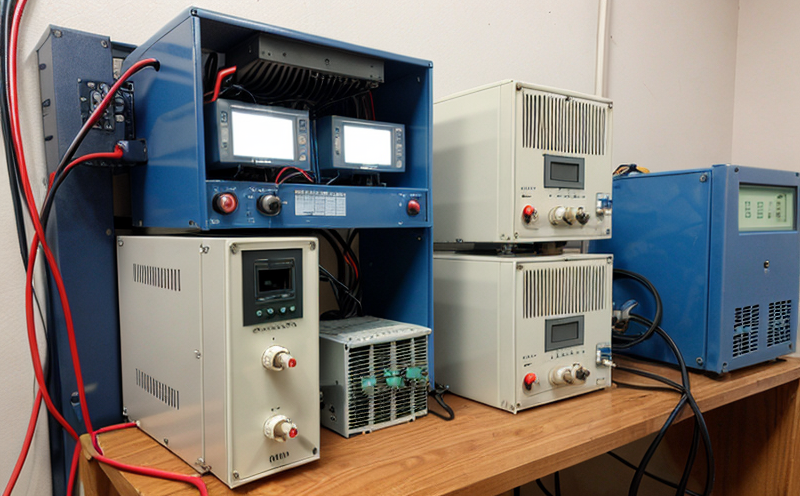EN 50388-2 Energy Measurement Testing in Railway Systems
The EN 50388-2 standard is a critical component of railway infrastructure that focuses on accurate energy measurement within railway systems. This test ensures compliance with European Union directives and supports the safe, efficient, and reliable operation of electric traction equipment. Energy measurement plays a pivotal role in optimizing power consumption, reducing operational costs, enhancing environmental sustainability, and ensuring regulatory adherence.
In railway applications, energy measurement is not merely about counting kilowatt-hours; it involves precise and continuous monitoring to ensure that the system operates efficiently under various conditions. The standard addresses several key aspects:
- Measurement accuracy
- Data integrity
- Interoperability between different systems and suppliers
- Compatibility with existing railway infrastructure
The test procedure outlined in EN 50388-2 involves the use of specialized equipment to measure electrical parameters such as voltage, current, frequency, and power. This information is used to calculate energy consumption accurately. The standard also mandates periodic recalibration to maintain measurement accuracy over time.
Understanding the context of railway systems, where reliability is paramount, underscores the importance of this testing. Any deviation in energy measurement can lead to operational inefficiencies or safety hazards. Therefore, rigorous compliance with EN 50388-2 ensures that railway operators can trust their data and make informed decisions about maintenance schedules and system upgrades.
Compliance with this standard is essential for manufacturers of traction equipment, as it ensures that their products function correctly within the broader railway network. It also facilitates smoother integration into existing systems, thereby enhancing interoperability. For quality managers and compliance officers, ensuring adherence to EN 50388-2 can help mitigate risks associated with non-compliance penalties.
Furthermore, R&D engineers benefit from this testing by validating new designs against established standards. This not only ensures product reliability but also enhances the overall efficiency of railway operations. Procurement teams can leverage this standard to select suppliers who meet stringent quality and performance criteria, thus contributing to long-term operational excellence.
Applied Standards
| Standard Number | Description |
|---|---|
| EN 50388-2 | Eurocodes for railway applications – Part 2: Energy measurement in traction systems |
| IEC 61970 | Data models and exchange for power generation, transmission and distribution |
| IEEE 519-2014 | Recommended Practice and Requirements for Harmonics in Electrical Power Systems |
| Test Parameters | Description |
|---|---|
| Electrical parameters (voltage, current) | Measures the electrical characteristics of power supply systems to ensure accuracy. |
| Power factor correction | Evaluates the efficiency of energy conversion and distribution within railway traction systems. |
| Data integrity checks | Verifies the reliability of data collected for future analysis and reporting. |
Why Choose This Test
- Ensures compliance with international standards (EN 50388-2)
- Enhances the reliability of energy measurement systems in railway applications
- Promotes interoperability between different traction equipment suppliers
- Supports regulatory and environmental compliance requirements
- Guarantees accurate data for informed decision-making by operators and engineers
- Facilitates smoother integration into existing infrastructure without disruptions
- Reduces operational costs through optimized energy consumption
- Improves safety by ensuring that all components function as intended within the railway system
Competitive Advantage and Market Impact
The implementation of EN 50388-2 testing provides significant competitive advantages for railway equipment manufacturers, operators, and suppliers. By adhering to this standard, companies demonstrate their commitment to quality and reliability, which can be a differentiating factor in the market.
Compliance with EN 50388-2 ensures that products meet stringent technical requirements, thereby reducing the risk of operational failures or malfunctions. This not only enhances customer confidence but also fosters long-term business relationships. Additionally, by ensuring accurate energy measurement and data integrity, companies can offer more efficient solutions that contribute to sustainable transportation practices.
For railway operators, compliance with this standard translates into improved operational efficiency and reduced maintenance costs. Accurate energy measurement allows for better planning of resources, which can lead to cost savings in the long run. Moreover, by adhering to international standards, companies position themselves as leaders in their respective markets, attracting more business opportunities.
The competitive landscape in railway transportation is continually evolving, with a growing emphasis on sustainability and efficiency. EN 50388-2 testing aligns perfectly with these trends, offering a robust framework for manufacturers and operators to stay ahead of the curve. By embracing this standard, companies can demonstrate their commitment to innovation and quality, ultimately enhancing their market position.





